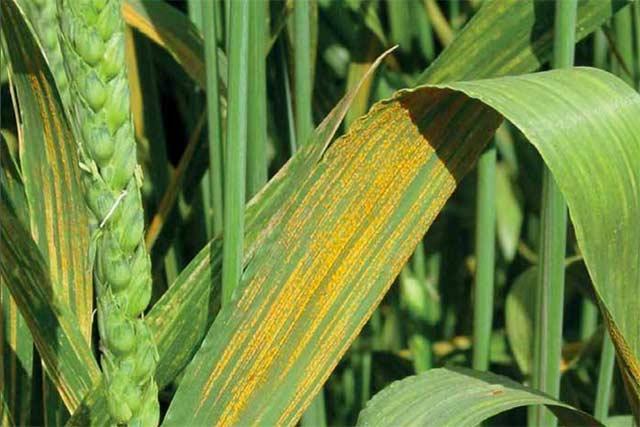
Submitted by H.L. Jones on Mon, 08/11/2021 - 00:00
A wheat rust early warning system developed by the Department’s Epidemiology and Modelling Group in collaboration with the Met Office, CIMMYT, EIAR and ATA has been presented at COP26. Held in Glasgow, this year’s United Nations annual climate change summit is focused on the effects of climate change, including its impact on the resilience of the global food system.
This was the major focus of the Met Office’s Farmers Feed Us All: Using Climate for a Resilient Food System panel event held in the Science Pavilion on Saturday 7 November. CIMMYT’s Yoseph Alemayeh joined the panel to discuss wheat rust disease - one of the most economically significant crop fungal diseases in the world and a major threat to food security. The panel discussed the impact of climate change on wheat rust diseases and what can be done to mitigate this, with Yoseph discussing the positive impact an early warning system developed in collaboration with the Department’s Epidemiology and Modelling Group had on controlling the disease in Ethiopia. The early warning system, which uses modelling developed by the group, has had a positive impact in Ethiopia, where it has helped farmers to protect their crops through the effective application of fungicide.
Wheat rust diseases are caused by airborne fungal spores and are widely distributed across wheat growing regions. Rust diseases possess the ability to spread and travel long distances by dispersal of windborne spores and can rapidly develop under optimal weather conditions. These diseases pose a major threat to food security all over the globe, especially in countries in East Africa and South Asia. With the capacity to form new strains of fungus, rusts can attack even previously resistant varieties and new emerging strains of the disease present an intensifying risk of severe crop loss. Hence understanding more about this disease and developing effective warning systems that help farmers protect their crops have never been more important.
The Department’s Epidemiology and Modelling Group in collaboration with the Met Office, CIMMYT, EIAR and ATA, has established an effective early warning system that provides a daily near-real time weeklong forecast of the spread of stem rust (Puccinia graminis), stripe rust (Puccinia striiformis) and leaf rust (Puccinia triticina) in Ethiopia. The early warning system relies on modelling that involves a combination of meteorological and epidemiological models with additional inputs from in-country surveillance coordinated by CIMMYT. The group is responsible for the development and maintenance of the modelling elements of the early warning system, including the adaptation of a particle dispersal model (NAME) originally developed by the UK Met Office for rust spores. The UK Met Office also provides seven-day weather forecasts for the target countries to drive the models, giving farmers a three-week window to apply fungicides to prevent rust epidemics. The models are also being used pre-season to assess risks from new races of wheat rust and to inform the selection of crop varieties likely to confer resistance. The introduction of the early warning system in Ethiopia has had a positive impact, and the system has recently been extended to include Kenya in East Africa as well as Nepal and Bangladesh in South Asia.
A recording of the event, which was originally presented and livestreamed on Saturday 6 November, is now available to watch on the UK Met Office’s YouTube channel here.
Work on the wheat rust early warning system is funded by The Bill and Melinda Gates Foundation and UK Foreign, Commonwealth and Development Office for East African part of the project and by the UK Foreign, Commonwealth and Development Office for South Asian, as part of the umbrella project Asia Regional Resilience to a Changing Climate.
